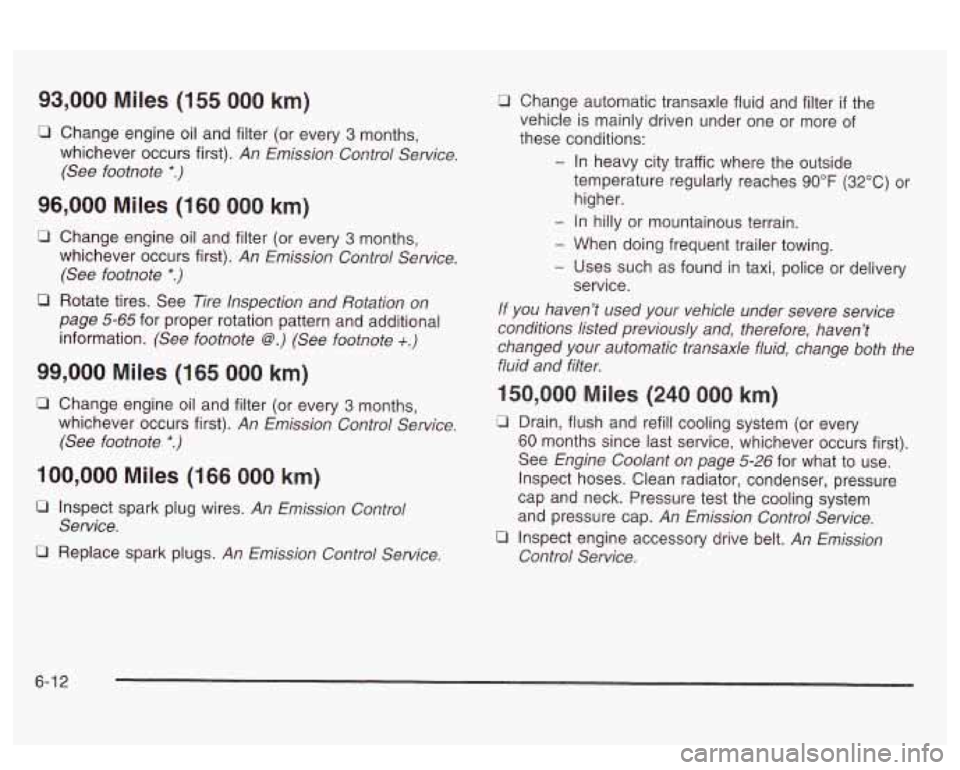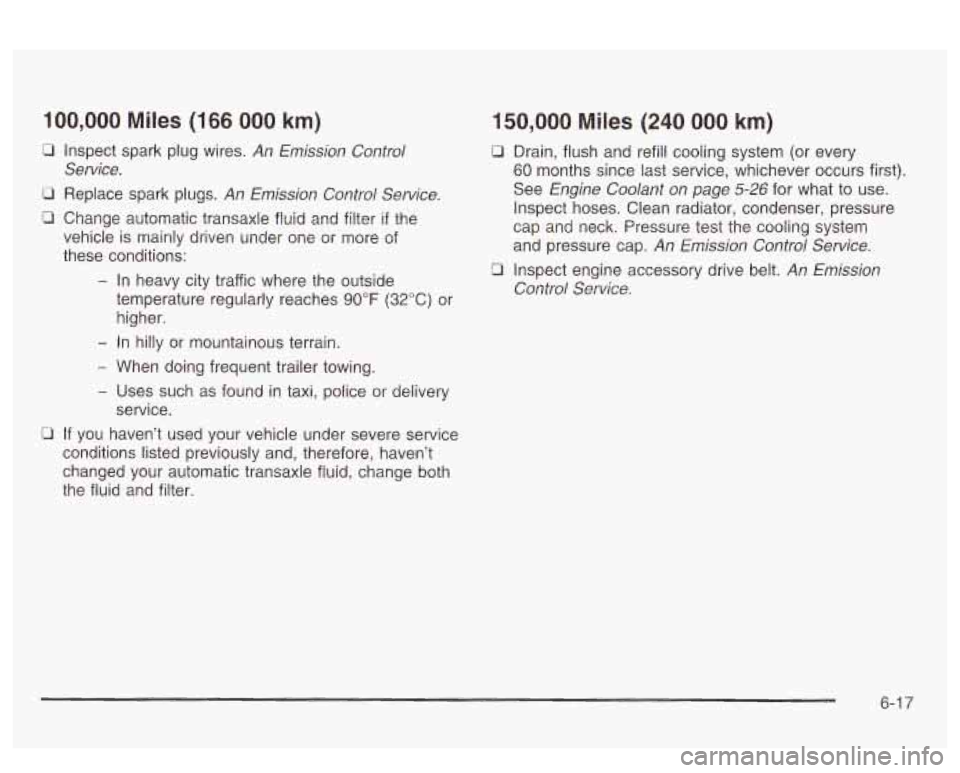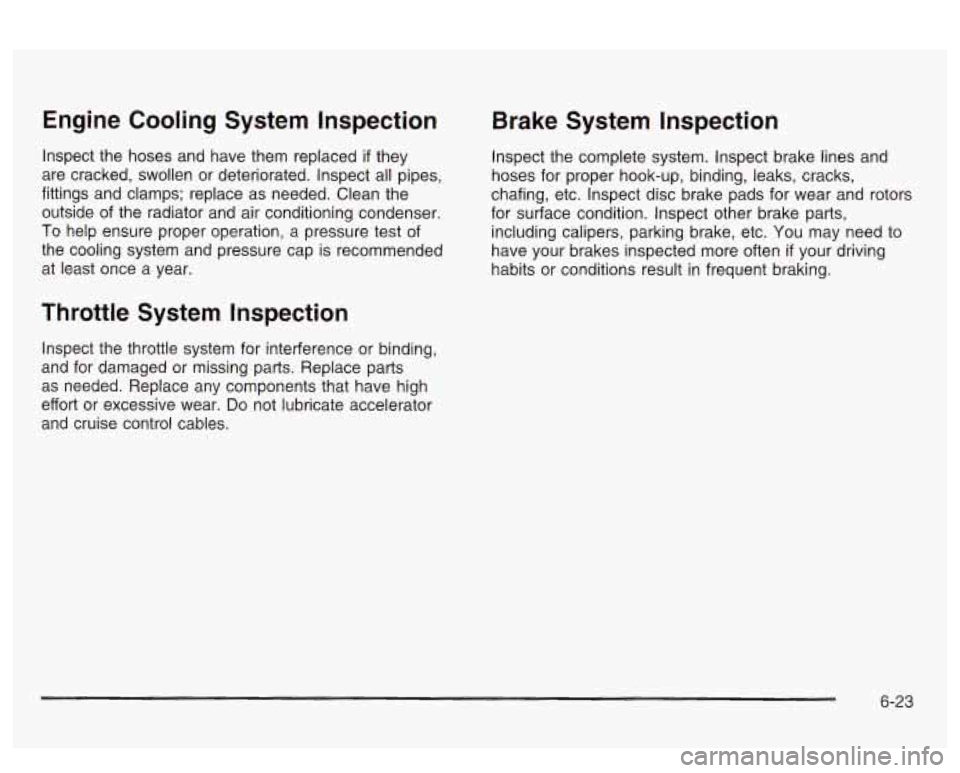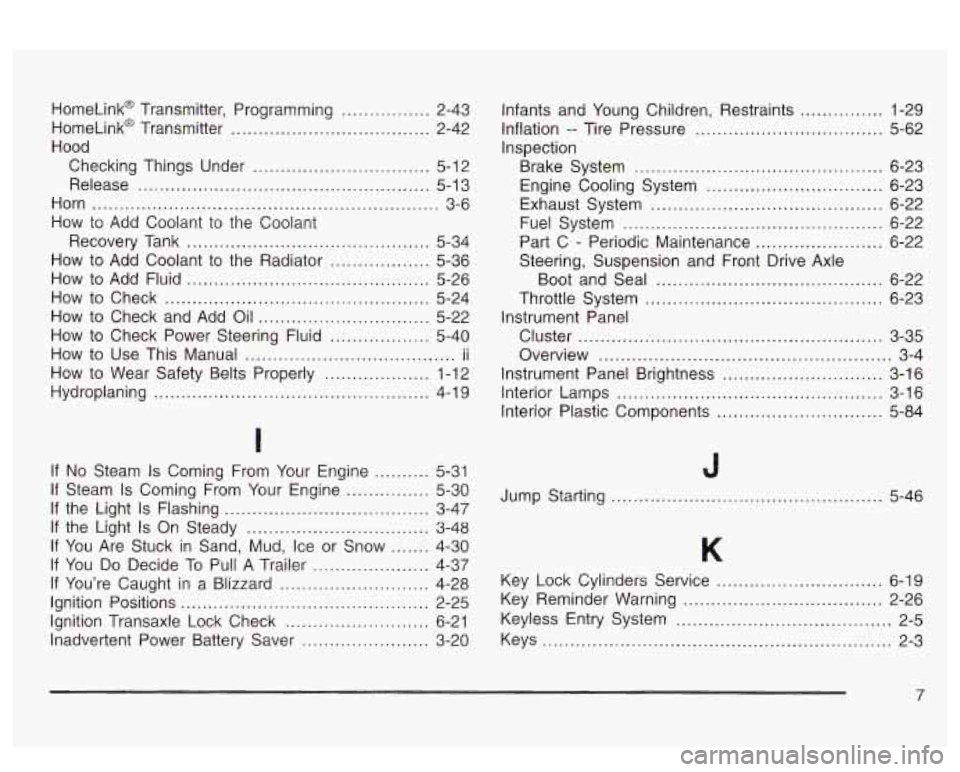Page 294 of 418
If the overheat warning continues, there’s one more
thing you can
try. You can add the proper coolant
mixture directly to the radiator, but be sure the cooling
system
is cool before you do it.
Steam and scalding liquids from a hot cooling
system can blow out and burn you badly. They
are under pressure, and if you
turn the radiator
pressure cap
-- even a little -- they can come
out at high speed. Never turn the cap when the
cooling system, including the radiator pressure
cap,
is hot. Wait for the cooling system and
radiator pressure cap to cool if you ever have
to turn the pressure cap.
5-35
Page 295 of 418
How to Add Coolant to the Radiator
1. You can remove the radiator pressure cap when
the cooling system, including the radiator pressure
cap and upper radiator hose, is no longer hot.
Turn the pressure cap slowly counterclockwise until
it first stops. (Don’t press down while turning the
pressure cap.)
If you hear a hiss, wait for that to stop. A hiss
means there is still some pressure left.
2. Then keep turning the pressure cap, but now push
down as you turn it. Remove the pressure cap.
5-36
Page 297 of 418
5. Fill the radiator with the proper DEX-COOL@
coolant mixture, up to the base of the filler
neck. See
Engine Coolant on page 5-26 for more
information about the proper coolant mixture.
If you see a stream of coolant coming from an air
bleed valve, close the valve. Otherwise, close
the valve after the radiator is filled.
6. Rinse or wipe any spilled coolant from the engine
and the compartment.
5-38
7. Replace the 3800 Series II V6 engine cover shield.
7.1. Remove the oil fill tube, with cap attached,
i.2. Insert the catch tab on the cover shield
under the bracket on the engine.
from the
valve cover.
7.3. Place the hole in the cover shield over the
hole in the valve cover. Install oil
fill tube and
cap by twisting clockwise.
7.4. If you have the supercharged engine, install
the nut in the center of the cover shield.
8. Then fill the coolant recovery tank to the
FULL
COLD mark.
Page 298 of 418
9. Put the cap back on the coolant recovery tank, but
leave the radiator pressure cap
off.
11. By this time, the coolant level inside the radiator
filler neck may be lower.
If the level is lower, add
more of the proper
DEX-COOL@ coolant mixture
through the filler neck until the level reaches
the base
of the filler neck.
12. Then replace the
pressure cap. At any
time during this
procedure
if coolant
begins to
flow out
of the filler neck,
reinstall the
pressure cap.
IO. Start the engine and let it run until you can feel the
upper radiator hose getting hot. Watch out for the
engine cooling fans. Be
sure the arrow on the pressure cap lines
up like this.
5-39
Page 373 of 418

93,000 Miles (155 000 km)
0 Change engine oil and filter (or every 3 months,
whichever occurs first).
An Emission Control Service.
(See footnote
*.)
96,000 Miles (160 000 km)
Q Change engine oil and filter (or every 3 months,
whichever occurs first).
An Emission Control Service.
(See footnote
*.)
0 Rotate tires. See Tire Inspection and Rotation on
page
5-65 for proper rotation pattern and additional
information.
(See footnote @.) (See footnote +.)
99,000 Miles (165 000 km)
0 Change engine oil and filter (or every 3 months,
whichever occurs first).
An Emission Control Service.
(See footnote
*.)
100,000 Miles (166 000 km)
0 Inspect spark plug wires. An Emission Control
Service.
0 Replace spark plugs. An Emission Control Service.
0 Change automatic transaxle fluid and filter if the
vehicle is mainly driven under one or more of
these conditions:
- In heavy city traffic where the outside
temperature regularly reaches
90°F (32°C) or
higher.
- In hilly or mountainous terrain.
- When doing frequent trailer towing.
- Uses such as found in taxi, police or delivery
service.
If you haven’t used your vehicle under severe service
conditions listed previously and, therefore, haven’t
changed your automatic transaxle fluid, change both the
fluid and filter.
150,000 Miles (240 000 km)
0 Drain, flush and refill cooling system (or every
60 months since last service, whichever occurs first).
See
Engine Coolant on page 5-26 for what to use.
Inspect hoses. Clean radiator, condenser, pressure
cap and neck. Pressure test the cooling system
and pressure cap.
An Emission Control Service.
0 Inspect engine accessory drive belt. An Emission
Control Service.
6-13
Page 378 of 418

100,000 Miles (166 000 km)
0 Inspect spark plug wires. An Emission Control
0 Replace spark plugs. An Emission Control Service.
0 Change automatic transaxle fluid and filter if the
vehicie is mainly driven under one
or more of
these conditions:
- In heavy city traffic where the outside
Service.
temperature regularly reaches 90°F (32°C) or
higher.
- In hilly or mountainous terrain.
- When doing frequent trailer towing.
- Uses such as found in taxi, poiice or delivery
service.
0 If you haven’t used your vehicle under severe service
conditions listed previously and, therefore, haven’t
changed your automatic transaxle fluid, change both
the fluid and filter.
150,000 Miles (240 000 km)
0 Drain, flush and refill cooling system (or every
60 months since last service, whichever occurs first).
See
Engine Coolant on page 5-26 for what to use.
Inspect hoses. Clean radiator, condenser, pressure
cap and neck. Pressure test the cooling system
and pressure cap.
An Emission Control Service.
tl Inspect engine accessory drive belt. An Emission
Control Service.
6-1
7
Page 384 of 418

Engine Cooling System Inspection
Inspect the hoses and have them replaced if they
are cracked, swollen or deteriorated. Inspect all pipes,
fittings and clamps; replace as needed. Clean the
outside of the radiator and air conditioning condenser.
To help ensure proper operation, a pressure test of
the cooling system and pressure cap is recommended
at least once a year.
Throttle System Inspection
Inspect the throttle system for interference or binding,
and for damaged or missing parts. Replace parts
as needed. Replace any components that have high
effort or excessive wear.
Do not lubricate accelerator
and cruise control cables.
Brake System Inspection
Inspect the complete system. Inspect brake lines and
hoses for proper hook-up, binding, leaks, cracks,
chafing, etc. Inspect disc brake pads for wear and rotors
for surface condition. Inspect other brake parts,
including calipers, parking brake, etc. You may need to
have your brakes inspected more often
if your driving
habits or conditions result in frequent braking.
6-23
Page 406 of 418

HomeLink@ Transmitter. Programming ................ 2-43
HomeLink@ Transmitter
.................................... 2-42
Hood Checking Things Under
................................ 5-12
Release
..................................................... 5-1 3
Horn
............................................................... 3-6
How to Add Coolant to the Coolant
How to Add Coolant to the Radiator
.................. 5-36
How to Add Fluid
............................................ 5-26
How to Check
................................................ 5-24
How
to Check and Add Oil ............................... 5-22
How to Check Power Steering Fluid
.................. 5-40
How to Use This Manual
...................................... ii
How to Wear Safety Belts Properly ................... 1-12
Hydroplaning
.................................................. 4-1 9
Recovery Tank ............................................ 5-34 Infants
and Young Children. Restraints
............... 1-29
Inflation
.. Tire Pressure .................................. 5-62
Inspection Brake System
............................................. 6-23
Exhaust System
.......................................... 6-22
Fuel System
............................................... 6-22
Part C
- Periodic Maintenance ....................... 6-22
Steering, Suspension and Front Drive Axle
Boot and Seal
......................................... 6-22
Throttle System
........................................... 6-23
Cluster
....................................................... 3-35
Overview
..................................................... 3-4
Instrument Panel Brightness
............................. 3-16
Interior Lamps
................................................ 3-16
Interior Plastic Components
........................... 5-84
Engine Cooling
System
................................ 6-23
Instrument Panel
If No Steam Is Coming From Your Engine .......... 5-31 J
If Steam 1s Coming From Your Engine ............... 5-30 Jump Starting ............................ If the Light Is Flashing ..................................... 3-47 ... 5-46
.
If the Light Is On Steady ................................. 3-48
If You Are Stuck in Sand, Mud, Ice or Snow ....... 4-30
If You Do Decide To Pull A Trailer ..................... 4-37
If You’re Caught in a Blizzard ........................... 4-28 Key Lock Cylinders Service .......................... 6-19
Ignition Positions
............................................. 2-25 Key Fkminder Warning .................................... 2-26
Ignition Transaxle Lock Check
.......................... 6-21 Keyless Entry System ....................................... 2-5
K
Inadvertent Power Battery Saver .................... 3-20 Keys ............................................................... 2-3
7